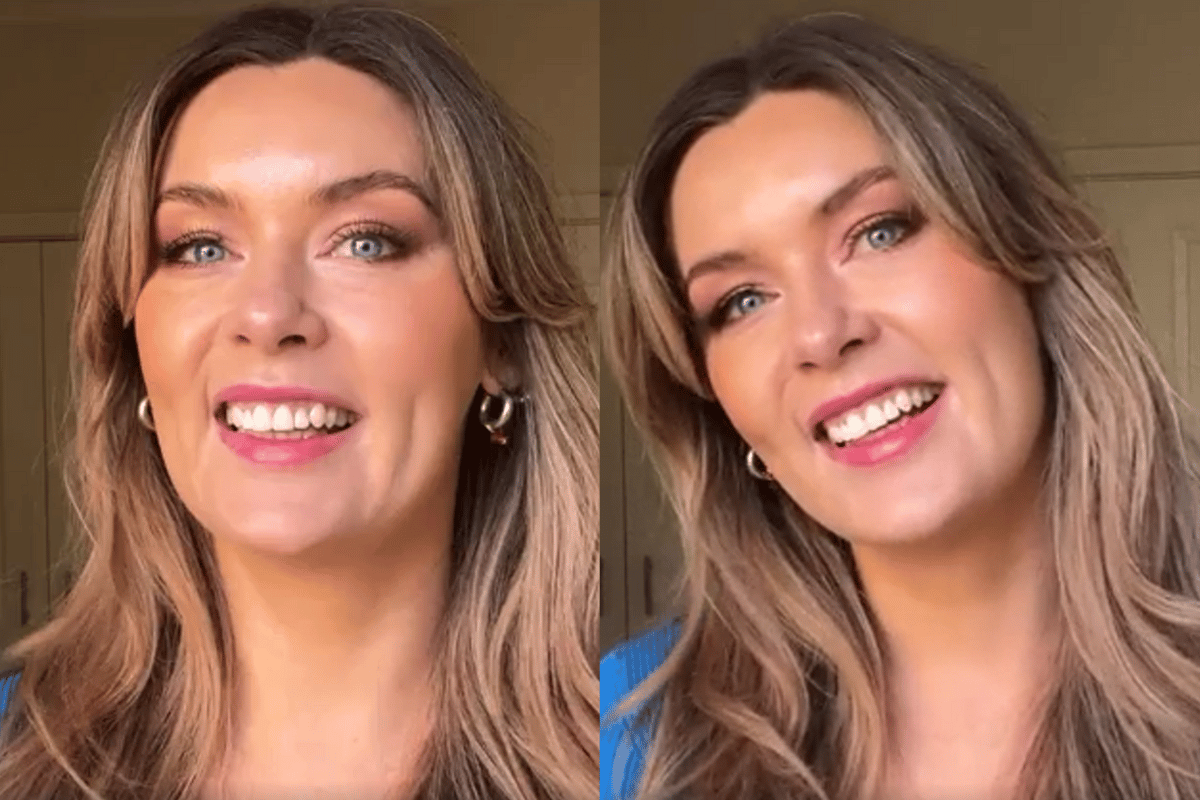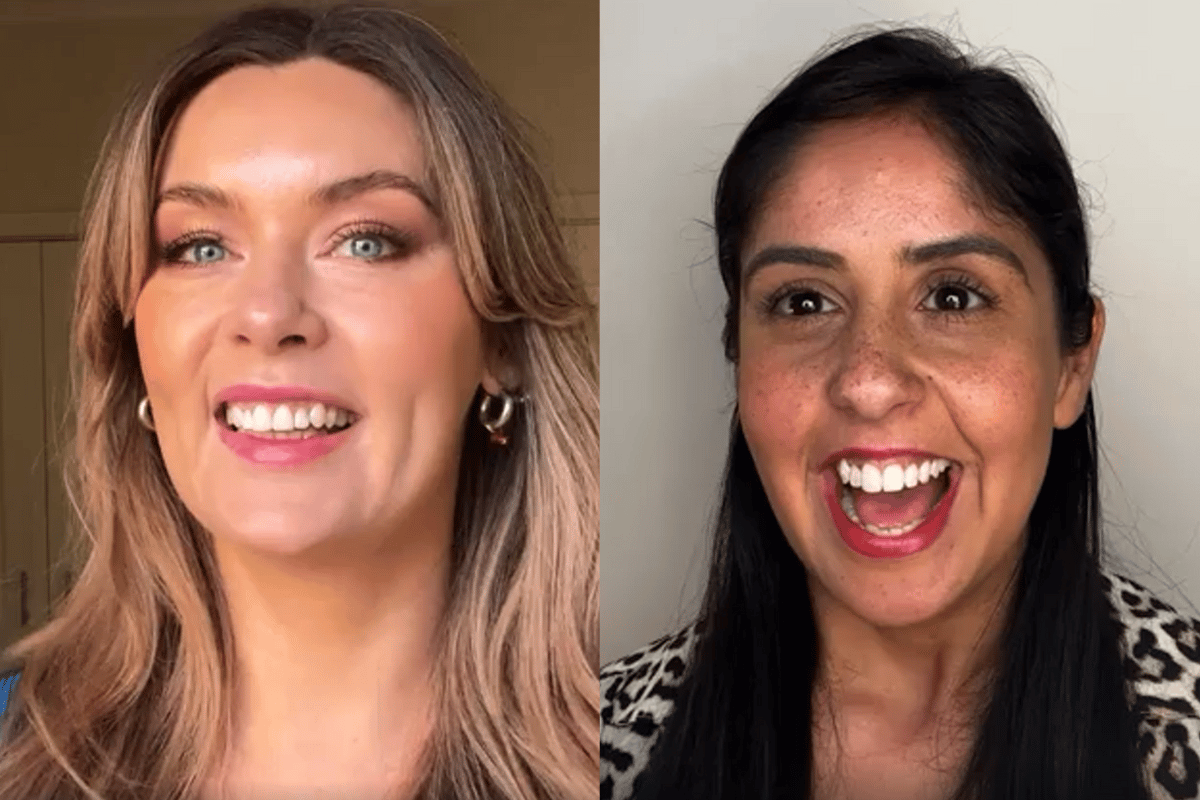
Retinol can be notoriously fickle to get along with. Especially if you don't know how to use it properly.
It's one of those heavy-lifting ingredients that can bring the ✨drama✨ if it's not used correctly, resulting in redness, flakiness, irritation and all of those other cute things.
But as we all know, it's arguably one of the most proven ingredients available in skincare – the gold standard when it comes to addressing a fat sack of skin concerns such as ageing, breakouts and pigmentation.
So, what's the secret? How does one find that sweet spot with retinol?
This is where our friend Hannah English comes in.
She's a beauty writer and content creator with a background in pharmaceutical research, and she's all about making the science around skincare feel... not scary.
And as part of our recent Skin Summit, we happened to snag English (and her brain) for a chin-wag about all things retinol. How good!
She sat down with the host of Mamamia's You Beauty podcast Sharon Hunt to talk about what most of us are doing wrong when it comes to using retinol.
And it was... confronting.
 Image: Mamamia
Image: Mamamia
Wanna know how to use retinol the right way? Course you do! We all do.
Here's what she said.
1. Waiting too long to introduce it into your routine.
Contrary to what you might have heard, there are actually no set rules on how old you should be to use retinol. Really!
Because everyone's skin is different – it really depends on your own individual skin type and concerns.
"You can use retinol for breakouts at any age," said English.
"So, if you're getting breakouts, then off you go. But, if you're looking at it for textures, I think the mid-20s would be a good time to start."
2. You're going too hard too fast.
Slow down, sport. Retinol is not a 'more is more' kinda thing.
If you're a newbie, English said to start with a low-concentration product and introduce it into your routine slowly.
"My philosophy has always been that if you use too much too fast, then you might have some adverse effects. So always go low and slow," said English.
Low and slow.
"Use a low percentage retinol product, use a small amount, and integrate it into your routine slowly."
"I suggest starting using retinol once a week with a pea-sized amount of whatever product you're using. You can even use it over a moisturiser at first if you're extra sensitive, or if you're worried about getting skin irritation."
"After a month, once you've observed how your skin behaves the day after using retinol, then you can up it to two nights a week and see how you go from there."
When it's time to purchase a new retinol, you can slowly increase the strength (if your skin can handle it).
3. Ignoring signs of irritation.
While some mild flaking and redness are normal side effects most people will experience with retinol, if your skin feels like it's burning or stinging, it's not a good idea to keep going. It's time to pull things back, friend.
"If you use too much, your skin could begin stinging or flaking or even a little bit tight. That's an indication that something worse might be coming if you don't dial it back," said English.
So, as a general rule of thumb, pay attention to your skin when you're using retinol. If it needs a break or a bit of a buffer between the next application, dial everything back (no active ingredients) and allow it to recover.
Only when your skin barrier has recovered and your skin is back to normal, should you re-introduce it back into your routine (slowly, at a low percentage).
4. You don't know the difference between retinol and retinoids.
Do you? It's all a little bit confusing, isn't it?
But English explains it like this: "Technically, retinoid means vitamin A. So, you might say retinol, retinaldehyde, or retinoic acid – they all convert into each other in your skin and your body, anyway."
Ahh, gotcha!
"And then there are gentler ones, like retinol palmitate. They're not exactly the same, but the end result is the same. The difference is just a matter of the speed you get to those results."
5. You're not pairing it with the right ingredients.
If you're not using a buffer with your retinol, you're going to have a bad time. Teaming retinol with nourishing and hydrating ingredients will help minimise irritation and better support your skin.
If you're looking for a good option, English said: "Niacinamide is a really nice one to pair with retinol because it helps to strengthen your skin barrier."
As well as this, she adds: "You also want to use products that give back to your skin, like hydrating serums and moisturisers."
If you're confused about what you should be reaching for, English said to remember one key thing.
"If you think about each skincare product, you want to ask yourself, 'Does this give back to my skin or does it take away from it?' You want to pair retinol with lots of things that give back to your skin."
6. You're using too many actives.
Retinol is a heavy lifter – so you shouldn't really pair it with other powerful actives, yeah? Instead, stick to the gentle, skin-loving ingredients we were talking about above.
"It's best not to use it with acids, like exfoliating acids, glycolic acid, lactic acid, salicylic acid, etc, just because those products can be challenging for your skin," said English.
"You just don't want to take it too far."
7. You're using retinol at the wrong time.
When it comes to the best time to use retinol, it's generally recommended to use it in the evening.
English said, "It's not that you can't do it in the morning, it's just that it's better suited to use overnight. That's when your skin is in repair mode, and it's in building extra collagen mode."
8. You're quitting too soon.
When it feels like your whole face is flaking off and you think your skin looks worse than it did before, it can be hard to want to stick with retinol. But we promise things will get better!
While retinol can cause some havoc to your skin, by going slow and steady and trusting the process, you'll reap the best results.
"I really noticed the results in about six months, but it really depends on the person. Overnight, you'll see a little bit of smoothing," said English.
"In a month, you might see a bit of changed texture. And in three months, it would have significantly helped with breakouts, more even skin tone, and diminished fine lines."
Did you miss The Skin Summit presented by Mamamia? Get on-demand access to the best skin experts in the world. Whether you love nerding out over a 12-step skincare routine or still use a bar of soap, the summit is the secret to the best skin of your life. Streaming directly to your couch. Catch up on-demand here.
You can follow Hannah English on Instagram and TikTok @ms_hannah_e. You can also find her on Twitter @hannaheenglish.
Have you used retinol before? Which one is your go-to? Share with us in the comment section below.
Feature Image: Mamamia; Hannah English.
Do you have kids with allergies or hay fever? Complete this survey now to go in the running to win a $50 gift voucher.